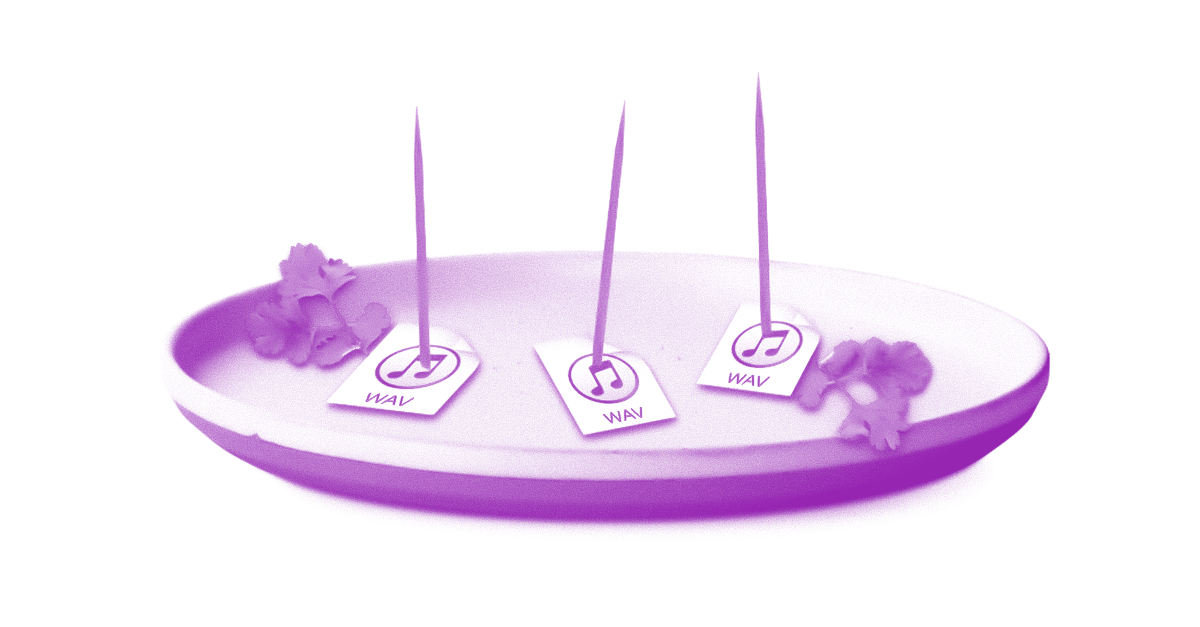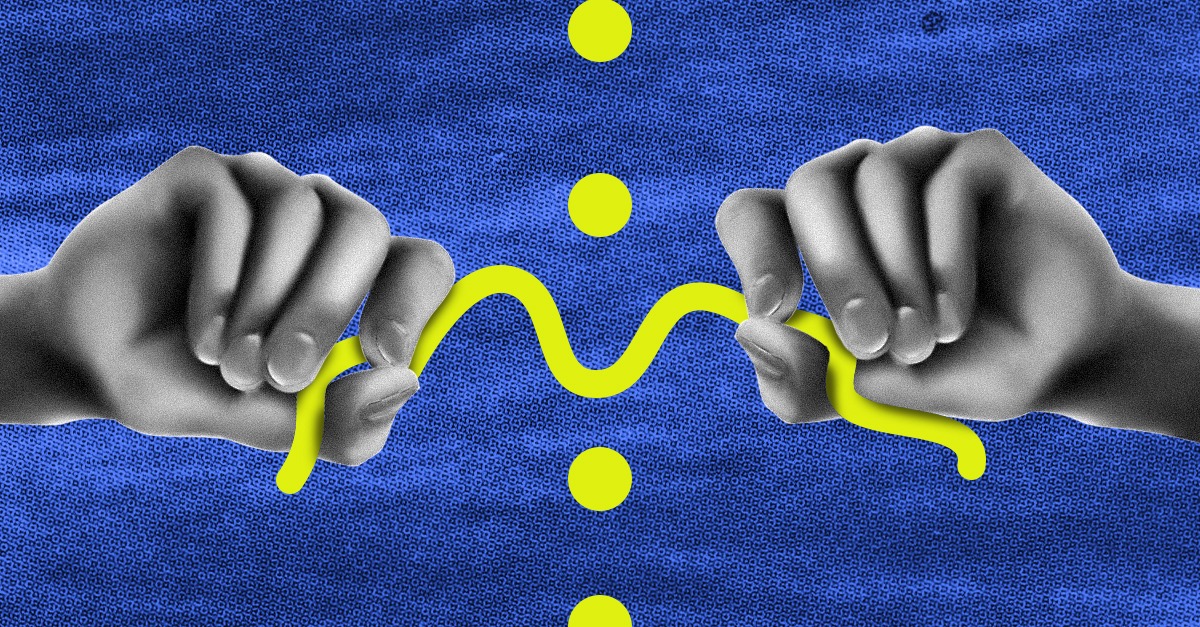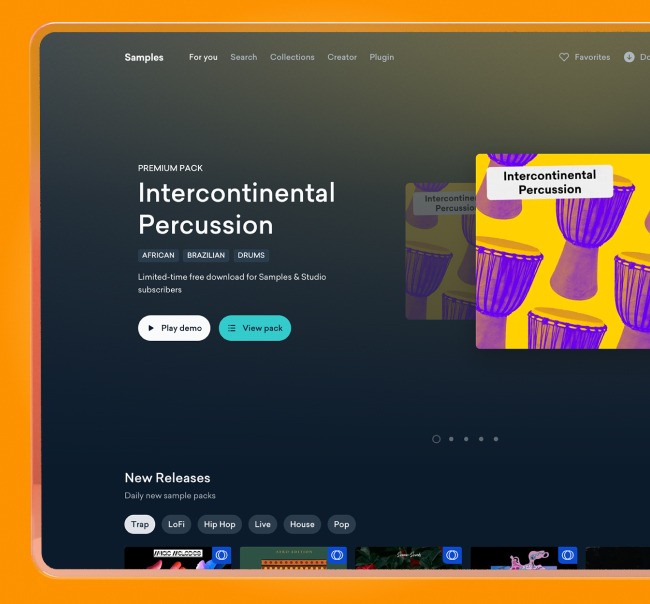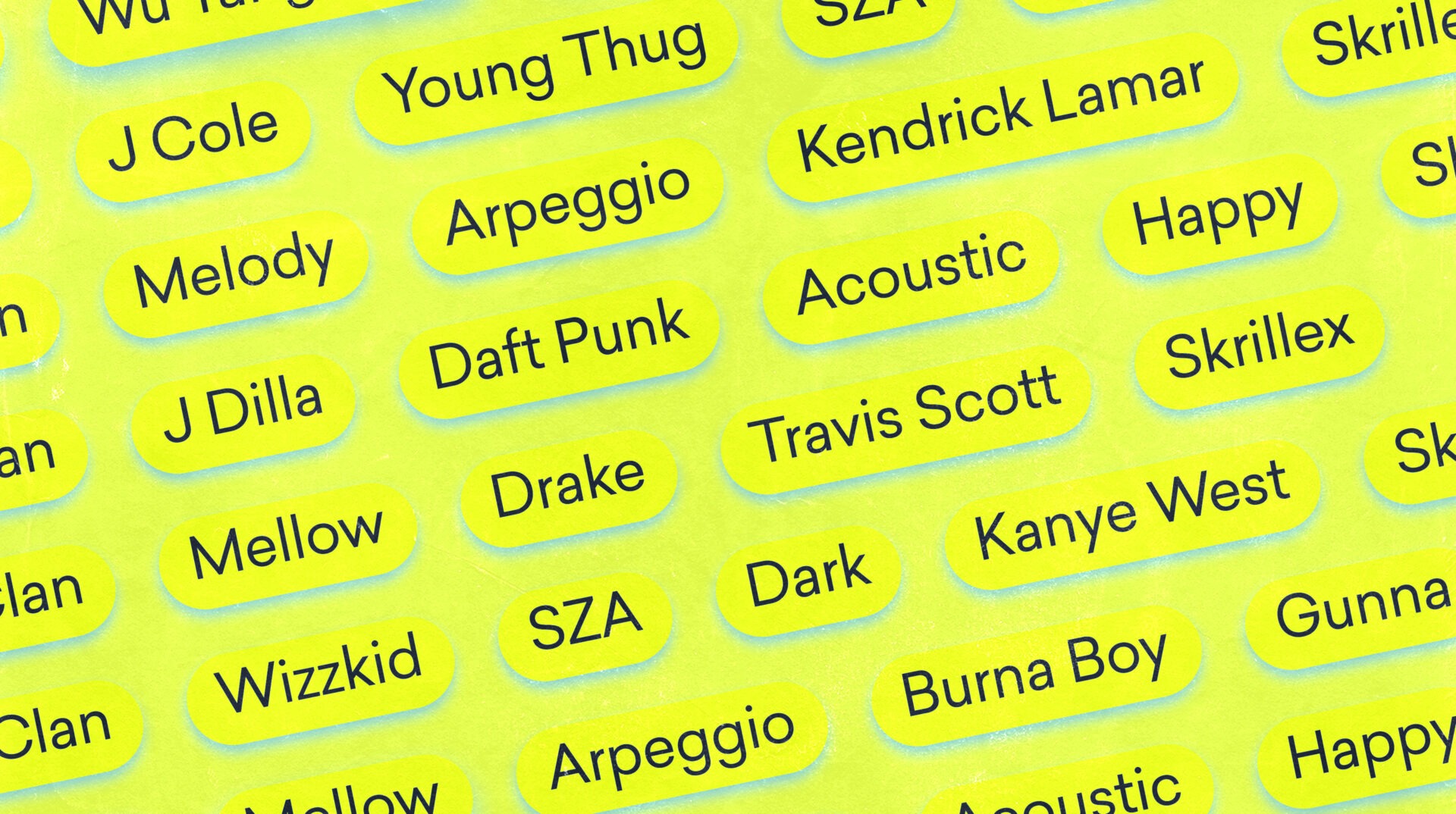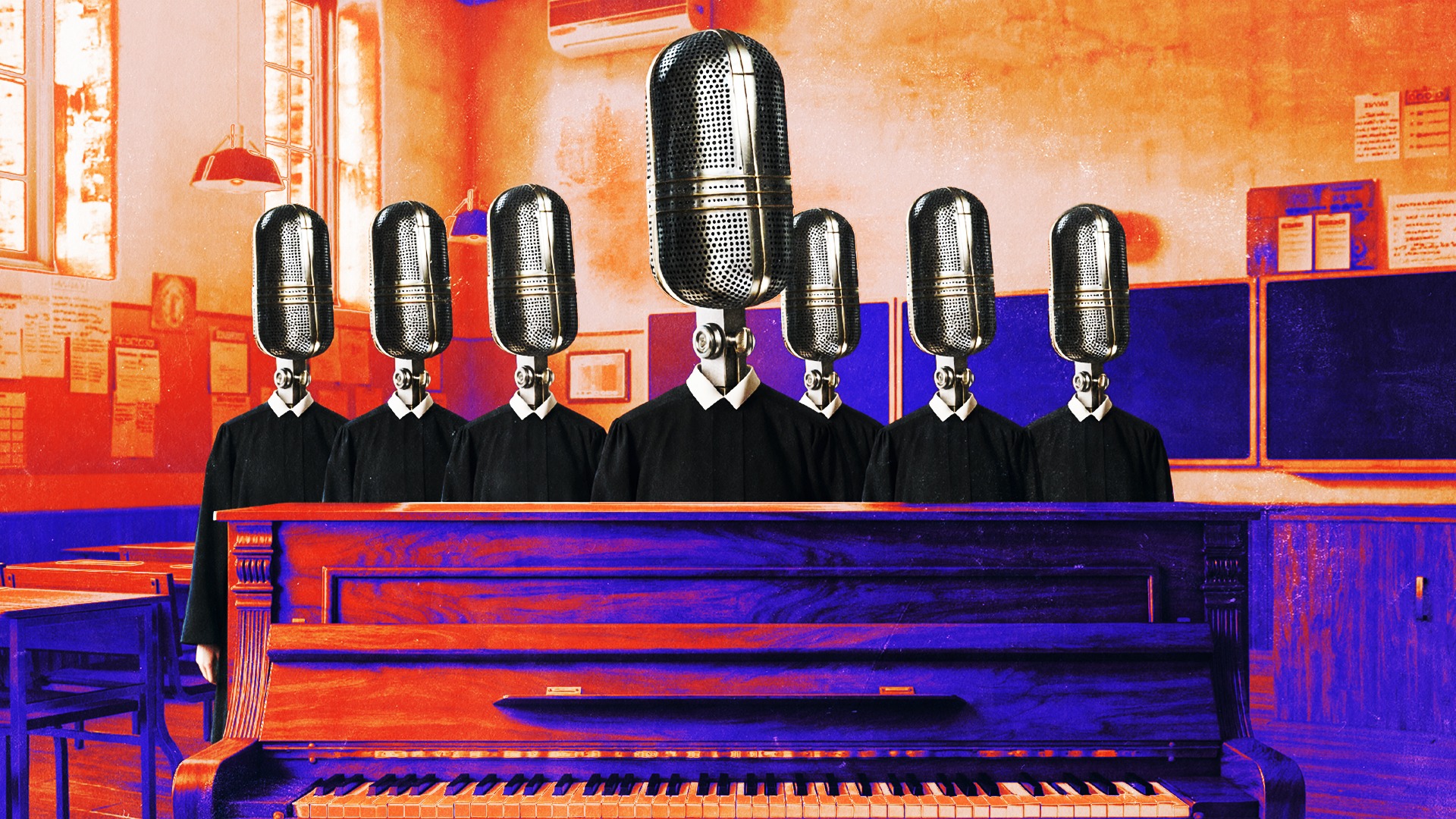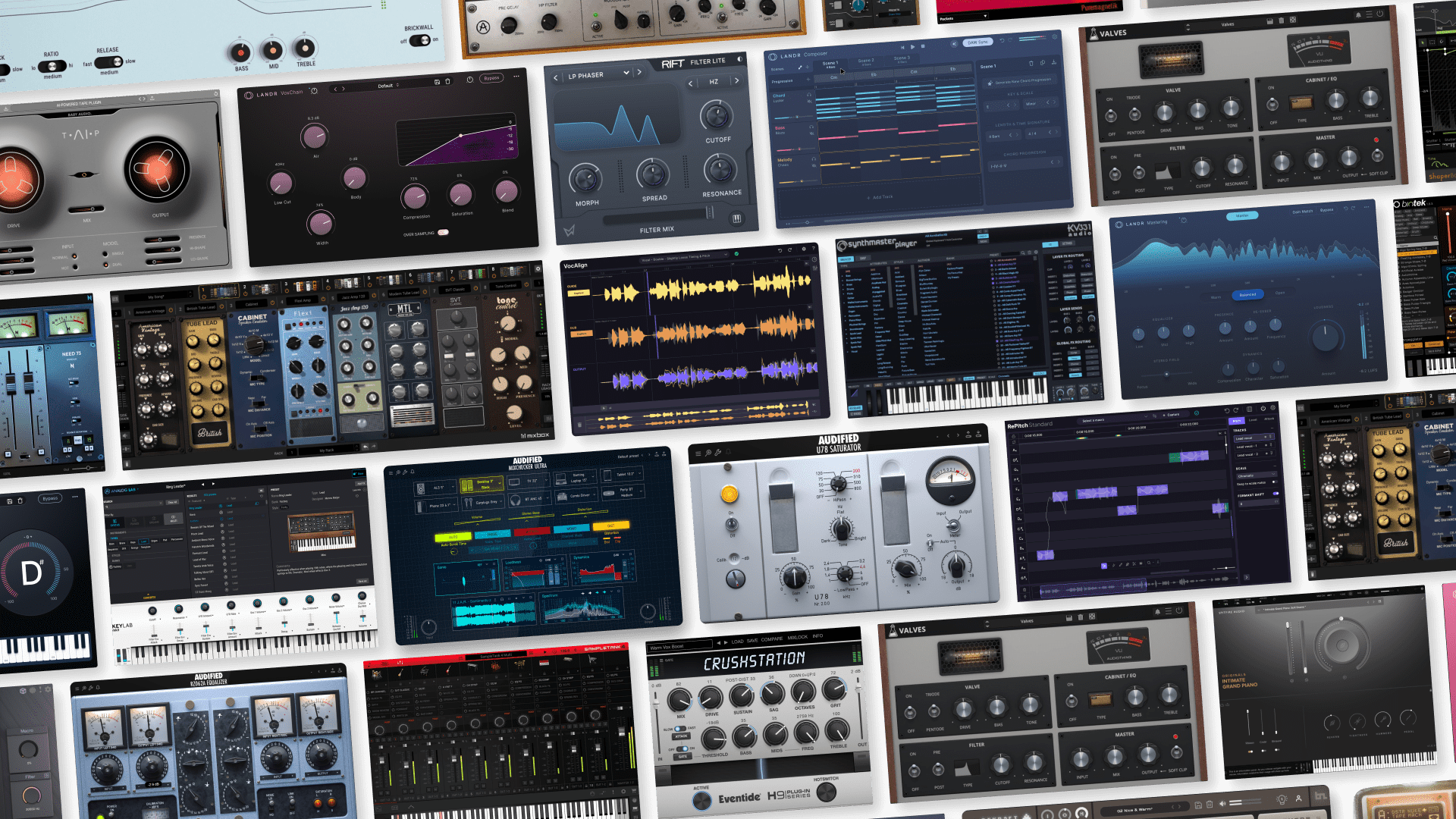
Sample Flipping: How to Flip Samples Into New Sounds

If you're interested in making beats, you've probably run into the term "sample flipping."
Sample flipping is a general term for the process of taking a sample and modifying it in some way to make a track, usually for a rapper to use as a beat.
It’s an essential part of making beats in hip-hop, and there are a lot of different techniques it can involve.
So, we’d like to run through ten of the most important sample flipping methods so that you can make them a part of your production style.
Let’s dig in.
10 common sample-flipping techniques
1. Chopping and slicing
This might be the most common and fundamental technique for sample flipping.
Today’s music tools make it easy to chop samples into smaller segments, insert slices that can be triggered via MIDI, or both.
You might do this with a sampling plugin or a built-in sampling device that comes with your DAW.
These tools typically provide a feature that will automatically slice a sample either at regular intervals (like whole notes, quarter notes, and eighth notes) or with automatic transient detection, allowing you to set the sensitivity of the threshold detector to get the slices you need.
You can also, of course, slice samples manually on the timeline of your DAW or in a WAV editor.
When it comes to drum samples, chopping and slicing is a very useful technique for reshaping the rhythm of a drum break to fit your needs for a beat. But it’s also inspiring for any other type of sample, especially vocals and melodic sounds like Rhodes piano.
For many producers, the best way to trigger chops and slices is with an MPC-style MIDI pad controller like the Akai MPD-218, but you can also just trigger them with a MIDI keyboard like the Arturia KeyStep series.
Chopping and slicing is a way to make a pre-existing rhythm or melody into something of your own, so it’s something that every beat maker should master.
There are countless examples of this technique out there, but here’s one that uses more experimental chopping techniques to create more distinctive and dense textures.
2. Sequenced gates
This technique is lesser known, but closely related chopping and slicing.
A gate is an effect that blocks out sound and allows it to pass through only under certain conditions, like when the sound goes above a certain threshold.
A sequenced gate, however, is a gate that opens and allows sound to pass through every time it is triggered by a sequencer.
This is particularly common in trance music, which is why the effect is sometimes called a “trance gate.”
But it can be very useful for any genre that involves sample manipulation.
A sequenced gate will allow the sample to play out but only come through the gate according to the steps you sequence, which are of course locked in with your tempo.
This is very useful when you have a sample whose rhythm isn’t quite the same as your track, but you like the way the melody or textures flow. A sequenced gate allows you to make the sample follow your song without slicing or complicated time remapping.
A classic example of this is the stuttering string motif in Kanye West’s “Flashing Lights.”
3. Pitch shifting
Pitch shifting is another technique that seems simple on the surface but holds a ton of different potential.
The most common applications of pitch shifting are, obviously, on pitches samples like vocals, keys, guitars, strings, etc.
One of the fastest and most inspiring ways to get a beat going is to take a melodic sample and play out a hook with it on your MIDI keyboard.
But pitch shifting has been applied to all kinds of sounds, even ones that you usually think of as percussion.
The 808 cowbell sound, for example, is now a famous element of phonk. This is exactly because producers began to play it like a melodic sound with pitch shifting.
And, of course, the drum breaks of jungle and drum ‘n’ bass are made by pitch shifting samples of funk and soul drum solos. The character of drums and percussion can change drastically when you pitch them up and down, so don’t hesitate to experiment with all kinds of pitch-shifting moves to see what emerges.
Here’s one of the more iconic examples of a pitched-up sample.
4. Filtering
When it comes to sample flipping, filtering is a technique that can have many different meanings and applications.
You might, for instance, use a simple low-pass, band-pass, or high-pass filter in the signal chain of your sampler to isolate the elements of the sample you want to use.
Or you might heavily EQ the sample to get rid of elements that don’t work as well in your mixdown and with the flow or key of your beat.
However, there is one particularly subtle yet useful application for filtering when flipping a sample, and that few producers make use of these days.
With a lot of old-school hip-hop, it was common to have the main sample hook playing with the beat for the bridge or verse, before a low-pass filter is applied to the main sample hook during a bridge or another verse. This muffles the hook while the beat keeps going.
This allows you to change up your beat in a simple way that keeps the rhythm going but helps the MC and/or vocalist stand out for more emphasis, almost like a solo.
It’s also a great way to emphasize certain harmonics in your main sample that aren’t as obvious when it’s playing without the filter.
Here’s an example from Brooklyn duo Smif-N-Wessun.
5. Time stretching
Time stretching is another technique that has a particularly long and iconic history.
From hip-hop to UK garage, jungle, and drum ‘n’ bass, this technique has been very useful for whenever a sound needs to fit the rhythm of a track while maintaining its pitch and tonality.
It has also been essential for getting drum breaks to change tempo slightly without altering their character too much.
However, some of the most interesting and memorable uses of time stretching are all about leaning into the way this technology changes the character of the sound at more extreme settings.
Time stretching algorithms, especially when being used to reduce the speed of a sample, can impart a stuttering, broken texture on the sound that has become a signature of certain hip-hop and electronic music styles.
In jungle, for example, you might hear a vocal sample that has been heavily slowed down with time stretching to work almost like a sound design element or a way to notch up the energy of a track.
We highly recommend experimenting with time stretching beyond its basic practical uses.
The vocal samples in “Check Out The Bass” by X-Altera occasionally get stretched to cover two full bars of the beat (or more).
6. Reversing
It’s pretty surprising how much you can change the character of a sample just by reversing it. This could be the most underrated tool in the sample flipping toolbox.
When it comes to melodic and harmonic samples, you can completely change the feel of a melody or chord progression by playing it in reverse, and the distinctive sound of this effect can often be used as a hook for a song.
One of the most famous examples of this is the orchestral hook in the song “Porcelain” by Moby.
Another is “Drop” by The Pharcyde.
But you don’t have to just reverse a sample and call it a day.
It can be interesting to flip a sample so that it alternates between playing forward and backward, or vice versa. In the section of a sampler that allows you to loop a segment of the sample, this forward-backward technique can be accomplished by setting the play mode to “ping pong.”
You can also send a sample into a reverb, record the full reverb tail, and reverse that recording to give you an interesting build-up.
And, of course, reversing a drum hit right before the forward version plays can be great for increasing the impact of a snare, a clap, or a crash.
7. Layering
Layering is another example of a technique that is simple yet very transformative.
Two different samples together can add up to something greater than the sum of its parts.
This is particularly common with drum sounds, such as layering two drum breaks together or multiple percussion hits, like a snare and a tambourine.
But there are plenty of applications for layering outside of drum and percussion samples.
While it may sound counterintuitive, it can be interesting to layer two or more melodic or vocal samples and resample them into a new sound so that they stay bound together (more on resampling in the next section).
This can change the character of how your samples sound when you explore other modifications, like pitch shifting, time stretching, and more.
In fact, you can even layer a drum loop, a vocal sample, and a keys sample to simulate the feel of sampling a complete song and chopping it for a more classic-sounding hook.
This brings us to our next technique.
8. Resampling
Sometimes you want to flip a sample without changing it too drastically, but sometimes you want to go further. This is where resampling really comes in handy.
Resampling is when you modify or process one or more samples and re-record the result as a new, single sample.
Some of the techniques we’ve mentioned above offer key use cases, but you can go so much farther than this.
You can, for example, send a sample through a delay to get a more dense texture, sample the output, and slice that into a new hook.
Or, you can play out a drum beat by hand in multiple layers, record the final output, pitch it up, and get a jungle-style drum break as a result.
Any way you can think of mangling a sample, try recording the output and using it as a new piece of sound to build a hook with. You might be surprised by how unique and catchy it can be.
9. Genre mixing
Some of the best sample flips in hip-hop have been cases where the source sample was from a genre that isn’t normally associated with hip-hop.
Oftentimes the assumption when making beats is that samples will have the sound of jazz, funk, soul, and even rock and roll. But you don’t have to limit yourself to these styles.
String samples, synth samples, and even more experimental samples can often create the most distinctive beats.
One classic example is “I Can” by Nas, which flips Beethoven’s Für Elise.
Another is Kendrick Lamar’s track “Money Trees,” which flips a sample from “Silver Soul,” a song by the dream pop band Beach House.
The best advantage of this technique is that it can make it a lot more likely for a hook to stand out and stick in the listener’s head.
Many of the best hooks in hip-hop and pop strike a balance between catchiness and novelty.
With an unexpected combination of genres, you can really make a beat stand out from the rest.
10. Reharmonization
If you want to challenge yourself a bit and take your sample flipping skills to another level, this trick can be one of the most satisfying by far.
Sometimes a sample you like isn’t in the exact key of the track you’re working on. Or, sometimes you want to open a track with a sample hook that has a certain mood, then change the mood of the track completely when the beat comes in.
These are a couple of ways to use reharmonization when flipping beats.
While this technique definitely isn’t easy, it can be a lot easier when you know your music theory and how different keys relate to one another.
But if you’re not quite there yet, you can use a tool like the Camelot Wheel to see how different keys relate or blend together without too much dissonance.
Another common approach for this is to use a high pass filter to remove the lower tones from a sample and write a new bassline that changes the mood of the remaining tones.
If you listen again to “Money Trees” and “Silver Soul” back to back (with headphones or good speakers), you’ll see how the bassline in the flipped version changes the vibe from the original.
However you choose to flip your samples, it’s all about making them your own and working within limitations to create something new!
Gear guides, tips, tutorials, inspiration and more—delivered weekly.
Keep up with the LANDR Blog.
